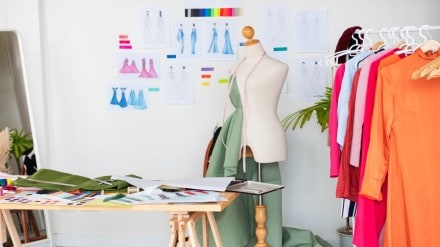By Sundeep Ramudamu
Fashion education transcends textbooks and lectures, it thrives on the essence of experiential learning, shaping aspiring designers into visionary professionals poised to navigate the dynamic and ever-evolving industry landscape. The role of experiential learning stands as a cornerstone in shaping the next generation of proficient and socially conscious Fashion Designers and Fashion Communication experts.
An essential aspect of experiential learning is the concept of lateral learning. ‘Lateral learning’ involves drawing inspiration, insights and ideas from diverse and unconventional sources outside traditional fashion education or industry channels. This innovative approach encourages students to acquire knowledge and skills from unexpected sources, bringing a fresh perspective to fashion design, business and communication. In the ever-evolving fashion world, lateral learning is not merely a concept but a profound and transformative experience. Complemented by sensorial experiences, such as exposure to music, art and films, students embark on a sensory journey that enriches their understanding of design and aesthetics.
Below are the important pillars of Experiential Learning in Fashion Education.
- Active Engagement & Ethical Fashion Practices
- Professional Practices & Collaborative Learning
- Reflection & Critical Thinking
- Relevance, Authenticity & Adaptability
Active engagement is the cornerstone of Experiential Learning’s teaching philosophy. Beyond being passive recipients of knowledge, students actively participate in their learning journey. Techniques like zero-waste pattern cutting, minimal seam construction, and upcycling are not just theoretical concepts; they represent a conscious effort to foster a sensitive approach to movement, textiles and design. This methodology instils a strong value system, guiding them towards ethical fashion practices.
Fashion, by nature, is a collaborative endeavour, recognizing this, the commitment to professional practices and collaborative learning is evident in initiatives such as the annual Fashion Show. Here, students work collaboratively with other departments, bringing their designs to life and preparing for the dynamic and collaborative nature of the fashion industry.
This mirrors the interdisciplinary teamwork prevalent in the professional fashion world, preparing students for the collaborative demands of their future careers.
In the fast-paced and trend-driven realm of fashion, the ability to reflect and think critically is indispensable. Experiential learning in fashion education fosters a culture of introspection and analysis. Projects like upcycling, where students repurpose materials to create new designs, transcend the realm of technical skills. They prompt students to contemplate the environmental and societal impact of their creations. The reflective component is often incorporated into the curriculum through journals, group discussions, and mentorship sessions. Through these mechanisms, students are encouraged to articulate their thoughts, question their design choices, and consider the broader implications of their work.
In an industry characterized by trends and innovations, staying relevant, authentic, and adaptable is crucial. The curriculum should be meticulously designed to align learning experiences with current industry trends, challenges and real-world contexts. Students are challenged to go beyond the surface of contemporary design and delve into the historical and traditional roots of fashion. The project emphasises not only the mastery of contemporary design skills but also a profound appreciation for the heritage and cultural aspects that shape the fashion landscape.
Experiential learning projects often involve exposure to cutting-edge technologies and innovations married with heritage and socio-cultural aspects. Students engage with 3D applications, virtual simulations and sustainable materials, ensuring that they graduate with a skill set that is not only current but also poised to adapt to the industry’s future developments.
In an era where fashion education is not only about teaching aesthetics, experiential learning becomes a powerful tool for instilling values of responsibility and awareness in the designers of tomorrow. By immersing students in collaborative projects, encouraging reflections, organising interdisciplinary workshops, providing experiential learning opportunities and fostering industry connections, fashion education becomes a holistic preparation for the future professionals of style and sustainability.
Diverse professions in fashion
An Experiential Learning curriculum in Fashion imparts technical skills and nurtures intellectual depth. Through engaging in contemporary debates around fashion, art, aesthetics, architecture, sustainability, craft, culture and environmental issues, fashion students learn the art of storytelling.
The multifaceted nature of experiential learning equips fashion students with a broad skill set and a profound understanding of the interconnectedness of diverse disciplines. As a result, they are well-prepared to thrive in a range of fashion professions within the dynamic and evolving landscape of the fashion world. Whether as Fashion Publicists, Stylists, Trend Forecasters, Fashion Marketers, Merchandisers, Strategists, Luxury Brand Architects, Digital Media Specialists, Fashion Journalists, Art Directors, Event Managers or Fashion Entrepreneur these students emerge as versatile professionals capable of making significant contributions to the industry.
The author is the associate professor, Fashion Business Management, Indian Institute of Art and Design.
